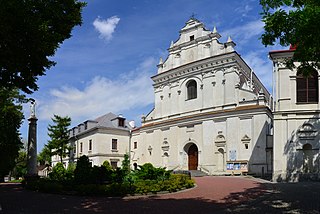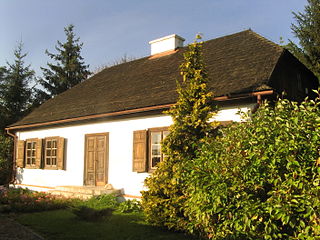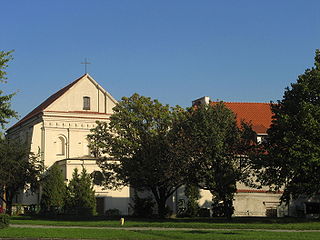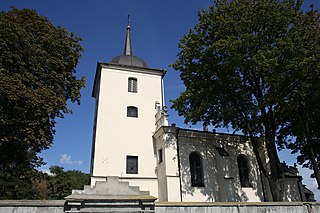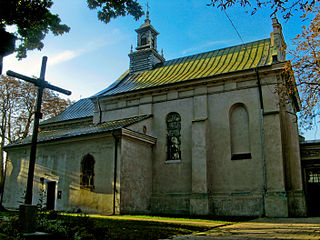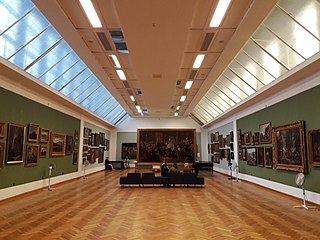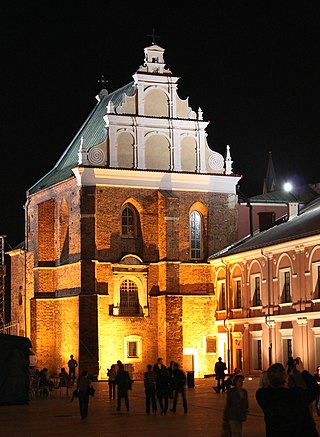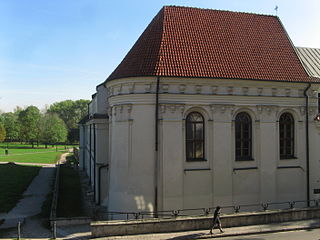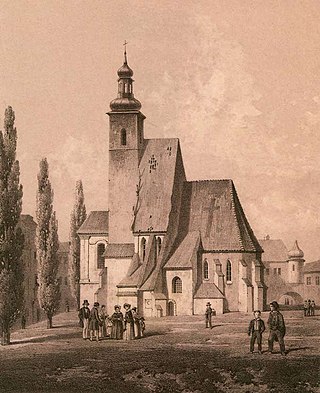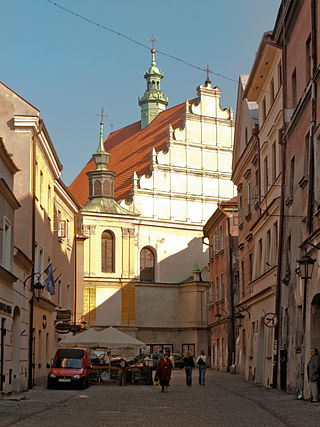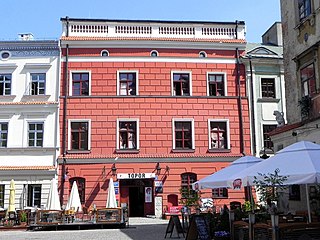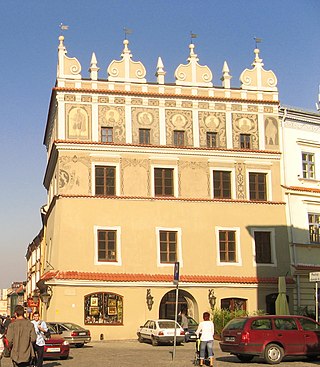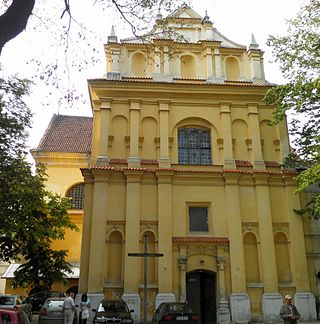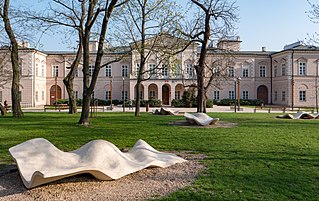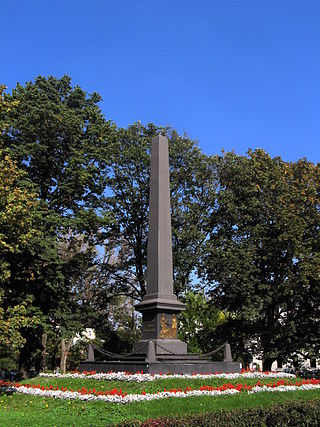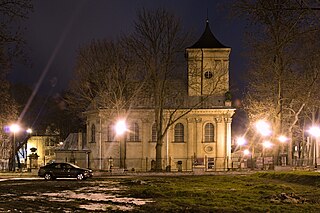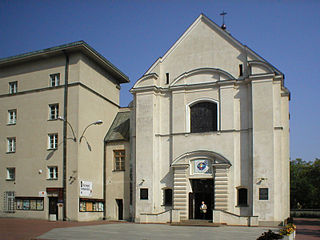Self-guided Sightseeing Tour #3 in Lublin, Poland
Legend
Guided Free Walking Tours
Book free guided walking tours in Lublin.
Guided Sightseeing Tours
Book guided sightseeing tours and activities in Lublin.
Tour Facts
6.3 km
121 m
Experience Lublin in Poland in a whole new way with our free self-guided sightseeing tour. This site not only offers you practical information and insider tips, but also a rich variety of activities and sights you shouldn't miss. Whether you love art and culture, want to explore historical sites or simply want to experience the vibrant atmosphere of a lively city - you'll find everything you need for your personal adventure here.
Activities in LublinIndividual Sights in LublinSight 1: Kościół pw. Świętej Agnieszki
Church of St. Agnes in Lublin – a Roman Catholic church built together with the Augustinian monastery in the years 1647-1667 in the Kalinowszczyzna, which was a separate jurisdiction, expanded after 1685, currently a parish church.
Sight 2: Dworek Wincentego Pola
Wincenty Pol's Manor House in Lublin – a biographical museum of Wincenty Pol located in a classicist manor house erected at the end of the 18th century on the premises of a small manor farm Firlejowszczyzna near Lublin.
Sight 3: Kościół pw. Matki Bożej Wspomożenia Wiernych
The Salesian Church of Our Lady Help of Christians in Lublin – the former monastery of the Franciscan Fathers. They came to Lublin in 1621. In the years 1635-1649, they erected a brick church in the Lublin Renaissance style dedicated to the Blessed Virgin Mary of the Angels and St. Francis on the site of the wooden church of St. Lawrence. The church was built on a swampy area, which is why it was built on wooden logs. The temple was repeatedly fired.
Wikipedia: Kościół Matki Bożej Wspomożenia Wiernych w Lublinie (PL), Website
Sight 4: Cerkiew Przemienienia Pańskiego
Cathedral of the Transfiguration is an Orthodox cathedral in Lublin, and the main church of the Diocese of Lublin and Chełm of the Polish Orthodox Church. It also serves as the seat of the Lublin Parish of the Transfiguration. The cathedral is located on Ruska Street.
Sight 5: Kościół pw. Świętego Mikołaja
St. Nicholas Church in Lublin – a Lublin church located on the Czwartek Hill at 1 Słowikowskiego Street.
Sight 6: Muzeum Narodowe w Lublinie
The National Museum in Lublin is one of the oldest and largest museums in Eastern Poland, located in Lublin. It was created in 1914, and received its own building in 1923.
Sight 7: Kaplica pw. Świętej Trójcy
The Chapel of the Holy Trinity, also known as Lublin Castle Chapel, is a Gothic chapel with a Renaissance gable located within the courtyard of Lublin Castle in Lublin, Poland. The chapel adjoins the museum of the castle complex and is an integral part of the site. It is known for its fifteenth-century frescoes in the Byzantine or Orthodox style, unusual for Catholic Poland.
Sight 8: The Grodzka Gate
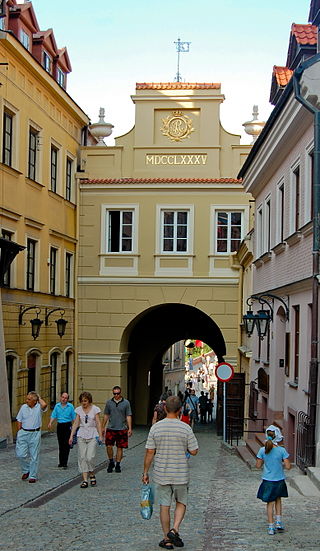
The Grodzka Gate or the Jewish Gate – the city gate in Lublin, the remains of the first brick elements of the city's fortifications, built in 1342, after the permission of Casimir III the Great. The present monument has the shape given to it in 1785 by the court architect of King Stanisław August Poniatowski, Dominik Merlini.
Sight 9: Kościół pw. Świętego Wojciecha Biskupa i Męczennika
St. Adalbert's Church in Lublin – the hospital church of St. Adalbert is a rector's building. The brick, late-Renaissance church was built in the years 1610-1635. Renovated in 1756, then adapted into a warehouse in 1835, it was restored in the years 1923–1930. Further restoration works were carried out in 1970 and 1974.
Sight 10: Fundamenty Kościoła Farnego
Church of St. Michael the Archangel – a Roman Catholic parish church of St. Michael the Archangel in Lublin, one of the oldest temples in the city and the first Gothic church in Lublin. It was demolished in the mid-nineteenth century.
Wikipedia: Kościół św. Michała Archanioła w Lublinie (farny) (PL)
Sight 11: Kamienica Archidiakońska 7
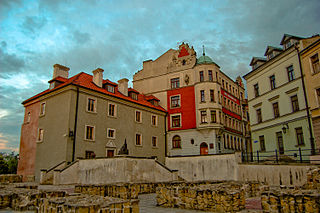
Mansionary house, mansionary or vicar house – a fifteenth-century monument in the complex of the former parish church of St. Michael in the Old Town in Lublin, at 9 Archidiakońska Street. Later, the building was rebuilt many times, before World War II it served, m.in others, as a tenement house. Currently, the entire apartment is an independent apartment.
Sight 12: Kościół pw. Świętego Stanisława Biskupa i Męczenika
The Basilica of St. Stanislaus the Martyr Bishop, also known as the Basilica of the Holy Cross Relics (Wood) or the Dominican Church – one of the oldest temples in Lublin, together with the monastery, is one of the longest existing institutions of this city.
Wikipedia: Bazylika św. Stanisława Biskupa Męczennika w Lublinie (PL), Url
Sight 13: Piwnica pod Fortuną
Piwnica pod Fortuną – a room with historic polychromes in the Lubomelski tenement house at Rynek 8 in Lublin. Until February 2018, the complex of cellars under the tenement house was managed by the Lublin Regional Tourist Organization; since then, the place has been under the care of the Lublin Underground Route of the "Grodzka Gate – NN Theatre" Centre. The basement is a year-round facility, open every day. Admission is paid.
Sight 14: kamienica Chociszewska
Chociszewska Tenement House – a tenement house at the Lublin Market Square with number 6, which begins the so-called "Lubomelski side" of the Old Town. In 1524, its owner was councillor Adam Doydzwon, and then Barbara Skromowska. In this tenement house, fragments of late-Gothic window frames were discovered. After 1630, the tenement house became the property of the Chociszewski family, hence its name – Chociszewska.
Wikipedia: Kamienica Chociszewska w Lublinie (PL), Url, Url 0
Sight 15: Synagoga Chewra Nosim
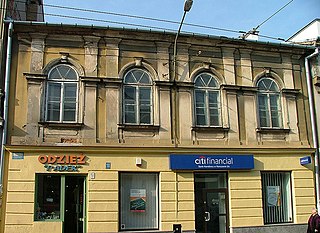
The Chevra Nosim Synagogue in Lublin is a synagogue located in Lublin at 10 Lubartowska Street. In the years 1945–2006, it was the main synagogue of Lublin Jews.
Sight 16: Kościół pw. Niepokalanego Poczęcia Najświętszej Maryi Panny
The Rector Church of the Immaculate Conception of the Blessed Virgin Mary in Lublin – a rectory church formerly belonging to the Order of Discalced Carmelites, now to the Sisters of Charity.
Wikipedia: Kościół rektoralny Niepokalanego Poczęcia Najświętszej Maryi Panny w Lublinie (PL), Url
Sight 17: Kościół pw. Świętego Jozafata
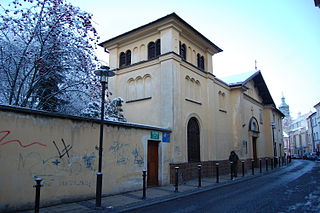
Church of St. Josaphat in Lublin was built by Greek merchants in 1786 upon the consent of king Stanisław August Poniatowski. In the second half of the 19th century the temple which was originally dependent on the patriarch of Constantinople was taken over by the Russian Orthodox Church and in 1922 it became the property of the Roman Catholic Church. At present it is Saint Josaphat's church which until recently was also used by Greek Catholics.
Sight 18: Pałac Lubomirskich
The Lubomirski Palace or the Radziwiłłowski Palace – a palace in Lublin erected in the Baroque style, then rebuilt in the Classicist style. The history of the building dates back to the sixteenth century, and its current appearance is due to the reconstruction of 1829. It is located on Litewski Square between the Czartoryski and Gubernialny palaces.
Sight 19: Pomnik Unii Lubelskiej
The Union of Lublin Monument is a monument on Litewski Square in Lublin, erected according to the concept of Stanisław Staszic, designed by Feliks Bentkowski and Paweł Maliński, unveiled on 26 August 1826. It commemorates the union of the Crown of the Kingdom of Poland with the Grand Duchy of Lithuania concluded in Lublin on 1 July 1569. The monument was erected in the place where the nobility came to the Sejm camped and where the sessions took place, opposite the present church and the Capuchin monastery. It is one of the three Lublin sites recognized in March 2007 by the European Union as a symbol of European heritage. At the monument there is the final stop of the Jagiellonian Trail of the Union of Lublin, which leads from the Lublin Castle.
Sight 20: Holy Trinity Church
The Church of the Holy Trinity in Lublin is a parish church belonging to the Diocese of Warsaw of the Evangelical-Augsburg Church in Poland.
Sight 21: Kościół pw. Świętego Krzyża
The church of the Holy Cross in Lublin - the Roman Catholic church of the Holy Cross at Idziego Radziszewskiego 7 in Lublin, in the Archdiocese of Lublin. The original church was created according to legend in 1434, when the Gdańsk merchant Henryk tried to steal the Lublin relic of the Holy Cross tree from the Dominican church. Under the cover of the night he wanted to take a relic from the city, but outside the walls of the oxen they stood and did not want to continue to pull the car. The terrified Henry turned to the city, gave the relic, and then founded a wooden church in a miraculous event. The original church existed until the beginning of the 17th century, when the councilors of Lublin wanted to create a second parish in the large city at the time, and therefore on the site of the old wooden church of St. The cross was issued by a new, brick. The creation of the second parish in Lublin did not occur then, in return, the personal state of the clergy of the Lublin parish church was increased. Michał, and the church of St. At the end of the 17th century, the cross was taken over by the Dominicans of observers who built a monastery next to it. The monks stayed here to the Third Partition of Poland, after which the Austrian government deleted "non -usable" monasteries. The Lublin monastery of the Dominican observers was turned into barracks, expanding it significantly. Barracks so -called Świętokrzyskie was located in it until the beginning. The 1920s, when the buildings were put into use to the newly established University of Lublin, which is still there. In the interwar years, the band's buildings, especially the church, were renovated and partly rebuilt under the direction and according to Marian Lalewicz's projects.
Share
How likely are you to recommend us?
Disclaimer Please be aware of your surroundings and do not enter private property. We are not liable for any damages that occur during the tours.
GPX-Download For navigation apps and GPS devices you can download the tour as a GPX file.
